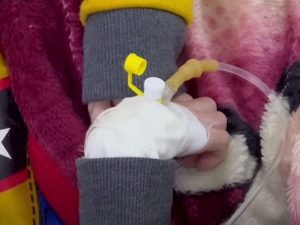Over 600 union reps will inspect workplace buildings for safety this week as part of an organised action. Reps are checking for life-threatening problems like RAAC, asbestos and fire-hazards. The action is timed for the run-up to Workers’ Memorial Day on Sunday 28 April, and is organised by the Trades Union Congress (TUC).
TUC: marking Workers’ Memorial Day with action
The TUC has organised a nationwide inspection of workplace buildings this week, with more than 600 trade union health and safety reps taking part.
Building safety has come to the fore in recent years for several reasons, including:
RAAC concrete: Reinforced Autoclaved Aerated Concrete (RAAC) was used mainly in public buildings from the 1950s to the 1990s – especially in roofs. It can be present in commercial buildings too. Its safe lifespan is only 30 years. Many buildings that contain RAAC, including lots of schools and hospitals, are now at risk of collapse. The extent of the problem is not fully known. However, surveys have so far found RAAC in 234 education settings, and the government says that in 119 schools, one or more buildings will have to be rebuilt or refurbished.
Asbestos: Asbestos was widely used in building up to the year 2000. It is very widespread in workplaces across both the public and private sector built before 2000. More than 5,000 people die in Britain each year from diseases linked to asbestos exposure. An estimated 1.5m buildings in Britain contain asbestos. Research by the TUC and Labour Research Department has uncovered the extent of asbestos in parts of the public estate, including NHS premises in London and Scotland and English local authority buildings.
Workplace ventilation: The Covid pandemic revealed the importance of adequate ventilation in workplaces to prevent infections from spreading. Regulations on workplace ventilation have been permanently strengthened following the pandemic.
Fire safety: The cladding associated with the Grenfell Tower tragedy is still present on some office blocks, schools, and hospitals.
Are we really safe at work?
The TUC is calling on the government and employers to make workplace buildings safer by:
- Publishing a national risk register, with public transparency about where hazardous building materials are located.
- Establishing a ‘remove and improve’ plan for RAAC in public buildings and for other materials causing structural deficiencies.
- Committing to a 40-year deadline for removing asbestos from public buildings – starting with schools – as called for by the Work and Pensions Select Committee.
The week of action on building safety is part of TUC and trade union activity for Workers’ Memorial Day on Sunday 28 April, when we remember those who lost their lives due to work-related illness or injury and commit to making all workplaces safe.
TUC general secretary Paul Nowak said:
Everyone should be safe at work. But when some people step through the door of their workplace, they step into danger.
This week trade unions are taking action by inspecting the safety of hundreds of workplace buildings. And we are calling on government ministers to speed up the removal of RAAC and asbestos from schools, hospitals and other public buildings.
If you’re worried about safety at work, get together with colleagues to join a union. Unions give workers the power to protect themselves. And the health and safety reps that we train can be life-savers.
Featured image via PICCOLINO208 – Envato Elements




